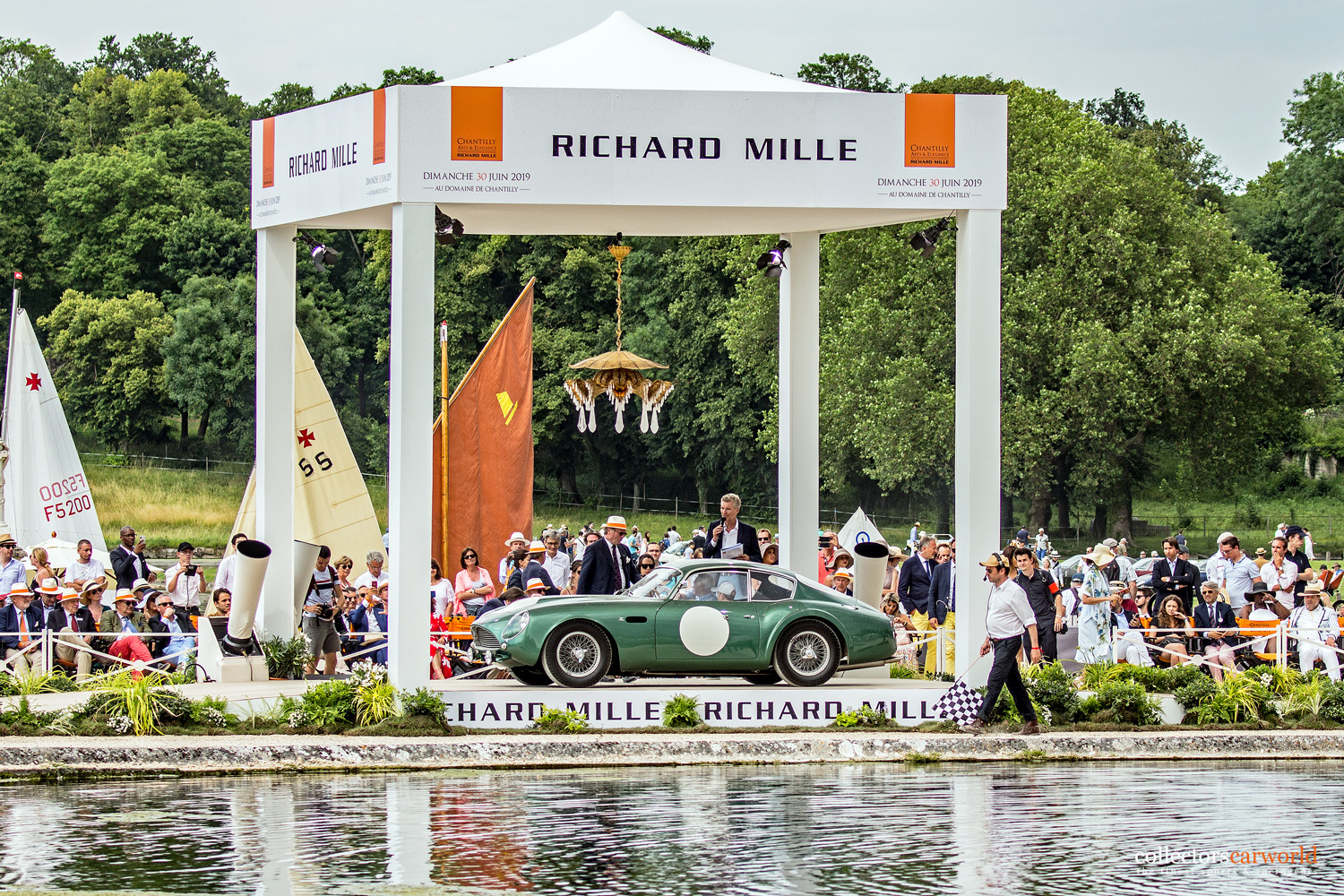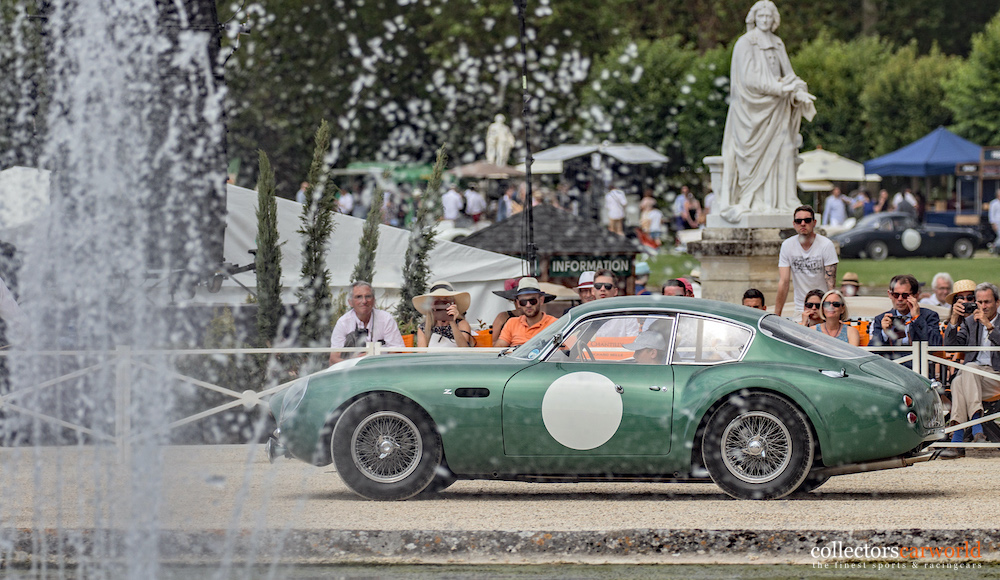Towards the end of the 1950s, the production car based GT racing became increasingly more popular. Short for Grand Touring or Gran Turismo, a GT was generally accepted to be a sporty two door road car. Above all, it offered wealthy enthusiasts an easy way into motor racing without having to purchase the highly complex and expensive sports prototypes.
At the end of that decade there were various championships for GT cars and most importantly in 1959 a GT class was first introduced in the 24 Hours of Le Mans. Aston Martin had won that year’s race outright and decided to cut back on the expensive motor racing program. Building a GT racer for their customers meant that the company’s name would still represented in races like Le Mans without having to shell out the big bucks to prepare and race the cars.
A few months before winning Le Mans, Aston Martin had introduced the all new DB4, which came equipped with a racing car derived engine and Touring’s very light ‘Superleggera’ body. The company figured it would for the perfect basis for the new customer racing car. Most of the mechanicals were retained, although beefed up in areas to survive the stresses of racing. The 3.6 litre engine was given a power treatment and output for the racing car rose from 240 bhp to a claimed 302 bhp. Bolted to a new close ratio 4-speed gearbox, the potent engine was installed in a shortened DB4 chassis and the DB4 GT was born. Although not homologated yet, the DB4 GT debuted in May of 1959 and Stirling Moss drove it to its maiden. It must be said; against modest competition.

Production of the DB4 GT started late in 1959 with many of the customers taking delivery at the start of the 1960 racing season. They faced the might of Ferrari, who had just upped the ante considerably by replacing the aging long wheelbase 250 GT with a brand new short wheelbase version. Despite its smaller engine, the light and nimble Ferrari frequently outdid the Aston Martins. Through the backdoor Aston Martin did offer some support to selected privateers and in particular to John Ogier’s ‘Essex Racing Stable’. In 1960 he received a special version of the DB4 GT, that was lighter still than the regular cars. Moss and Jack Sears both scored wins in these, but usually in the British ‘Closed Cars’ races where they faced large Jaguars. The Ferraris did come to Britain for the Tourist Trophy at Goodwood and in a Ferrari this time, Moss took a win ahead of Roy Salvadori and Innes Ireland in two Astons.
Aston Martin did not give up just yet and commissioned Zagato in Italy to put the British racing cars on a serious diet. This was very much the coachbuilder’s speciality as they had proven time after time with their distinctly bodied Alfa Romeo and Lancia racing cars. The Milan based company had just hired a very young designer called Ercole Spada, who had been given the difficult task to replace Elio Zagato, who had been injured in an accident. He did remarkably well as the new shape he penned for the DB4 GT has gone into history as one of the all time greats. Sadly the Zagato engineers struggled to shed sufficient weight off the Aston. The engine was modified and the output was rather optimistically raised to 314 bhp. Late in 1961, the first DB4 GT Zagato was introduced in London, bearing the very high chassis number 200. Aston Martin probably figured this would help homologating the car; the subsequent DB4 GT Zagatos produced sported lower numbers.
Needless to say Ferrari had not been sitting on their hands and their latest racers produced a staggering 285 bhp and more importantly were 25% lighter than the new DB4 GT Zagato. Things got even worse for Aston when the first of the lightweight Jaguar E-Types was driven to a debut win. Nevertheless the privateers perservered and in 1961 the odd win and many podium finishes were scored. Aston Martin continued to develop the car’s mechanicals and they experimented with magnesium gearbox cases on two of the Essex cars for Le Mans, which bore the famous license plates ‘1 VEV’ and ‘2 VEV’. It all proved in vain and although the teams struggled on in 1962, the DB4 GT Zagato was never a success on the track. From 1962 onwards the World Championship was run for GT cars and this sparked Aston Martin to take up racing again. They produced the so called ‘Project Cars’, but they again struggled, now against the even more potent Ferrari 250 GTO.
Between 1959 and 1962 Aston Martin produced just under 100 DB4 GTs of which 19 were equipped with Zagato bodies. Despite never really making a mark on the racing track the DB4 GTs have become some of the most sought after Aston Martins, with prices approaching seven figures for the standard version. The lightweight and particularly the Zagato bodied cars are exceptionally valuable. This high value inspired Aston Martin’s owners to build a series of replicas in the late 1980s and early 1990s. Using left over DB4 parts, the ‘Sanction 2’ cars were almost perfect copies of the originals or at least one of the originals as none of the hand-made Zagato bodies was identical. Full story on ultimatecarpage.com. Find out more about our photographer Rainer Selzer
Report by Wouter Melissen for ultimatecarpage.com
Photos by rs65photos.com











